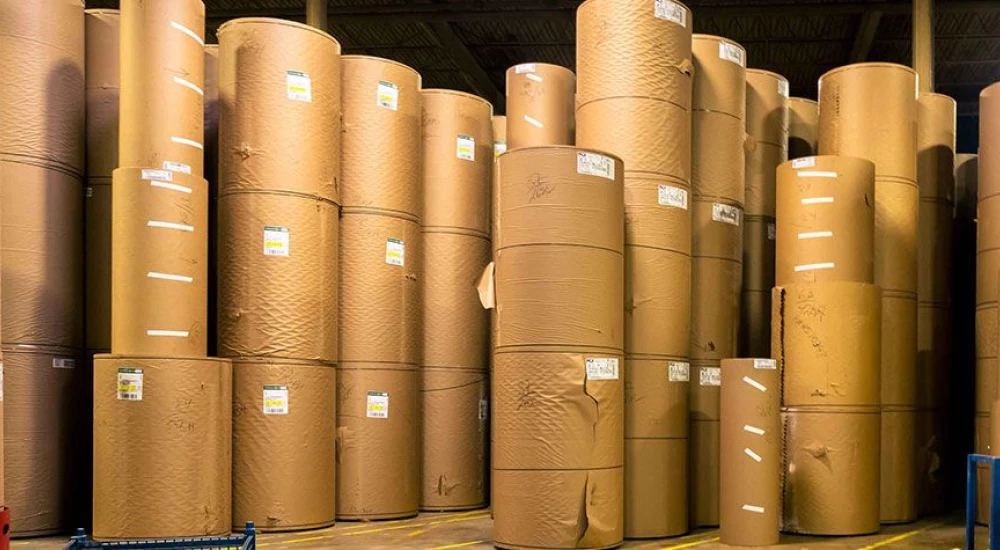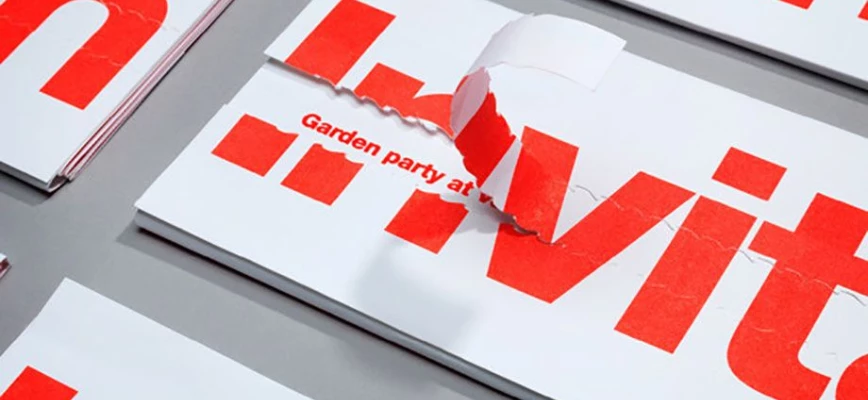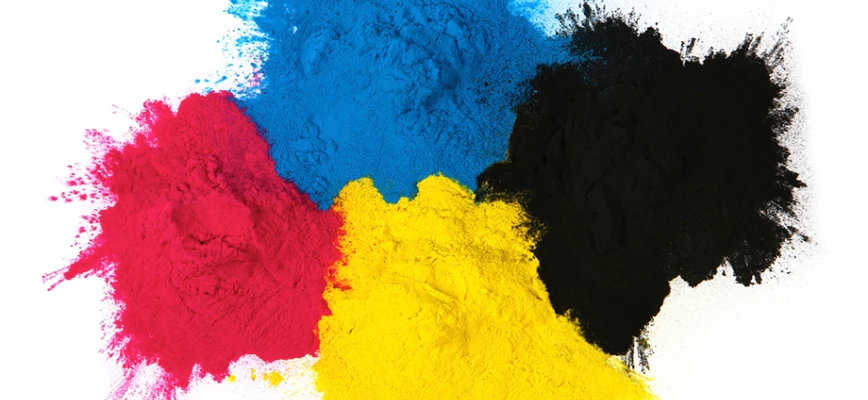Direct mail printing
Smooth versus textured paper stock
Overall, paper stock can be divided into two categories. Provided the printing process is top-notch, a smooth paper stock allows for the most detailed images, with vivid colors and sharp contrasts. This type of paper is mostly meant to be looked at, while textured paper invites recipients to adopt a more tactile approach. Graphics printed on textured paper are less nuanced due to the grain in the paper, yet that very same surface grain at the same time ‘releases’ the image.
- Smooth paper stock has the most visual impact and speaks to reason. It’s the go-to option for coupons, flyers, free magazines, … Depending on the coating, smooth paper stock can be glossy, matte, semi-matte, silky, … Varnish is the most cost-effective coating and creates an interesting graphic effect, but does not really protect the paper. Aqueous coating, on the other hand, does protect the paper while also creating a wet look and shortening drying times as it seals the ink in the paper. Post cards are usually given a special protective UV-coating.
- Textured paper exudes a luxurious feel and speaks to people’s emotions. It is recommended for high value direct mail (cosmetics, fashion, pharmaceuticals, automotive industry, …). Textured paper stock is also the preferred option for prints that include lots of text, as an uncoated substrate is less tiring on the eyes.
Paper thickness
Next to deciding between smooth and textured, selecting a suitable paper stock for your direct mailing campaign comes down to choosing the right weight or thickness. Evidently, a top-quality catalogue for BMW calls for heavier paper, while a coupon booklet for a local drug store easily gets away with a thinner, and hence cheaper, paper option. Still, balancing a restricted budget with a quality substrate can be challenging, so we’ve lined up some rules of thumb to point you in the right direction:
-
80-100 g/m² is the thickness of your standard office paper, and rarely used for direct mail printing.
-
110-120 g/m² is ideal for fancy stationery paper and the like.
-
130-170 g/m² is where it gets interesting. This weight is perfect for flyers, posters and brochures.
-
170-200 g/m² is the preferred thickness for luxurious posters, double-sided flyers and brochure covers.
-
200-250 g/m² leans toward cardboard. This thickness is recommended for high-quality brochure covers.
-
300-400 g/m² is what you might call the cardboard category. It’s also where business cards start.
-
+400 g/m² is mostly selected for top-of-the-line business cards and other types of luxury prints.
Ask about the FSC label
Don’t hesitate to ask your paper stock supplier about sustainable, FSC-certified substrates. Not only are millennial consumers increasingly concerned with the environment, some postage vendors will even offer you a discount when your direct mail campaign meets certain sustainability criteria.
Direct mail printing the Xeikon way
Once you've selected your paper stock, there’s still the question of picking a suitable printer. In any case, you can rest assured if you pick one who has a Xeikon press in place. Xeikon’s digital printing presses are perfectly compatible with any type of paper stock for direct mailing and can easily handle a paper thickness of up to 350 g/m².



